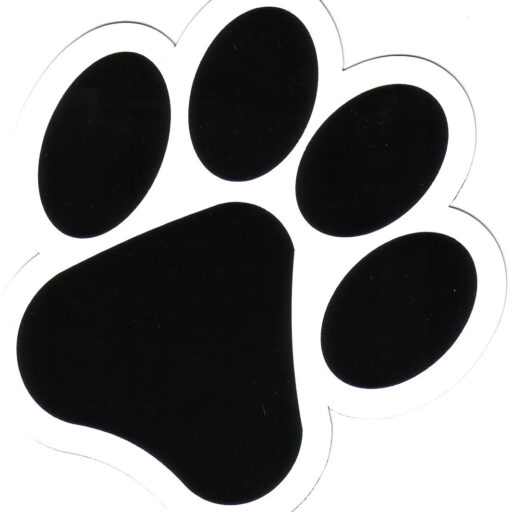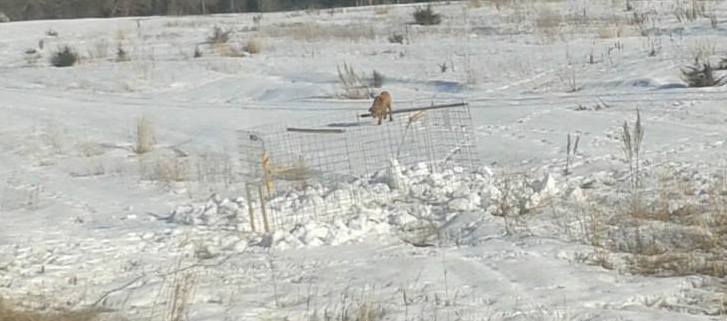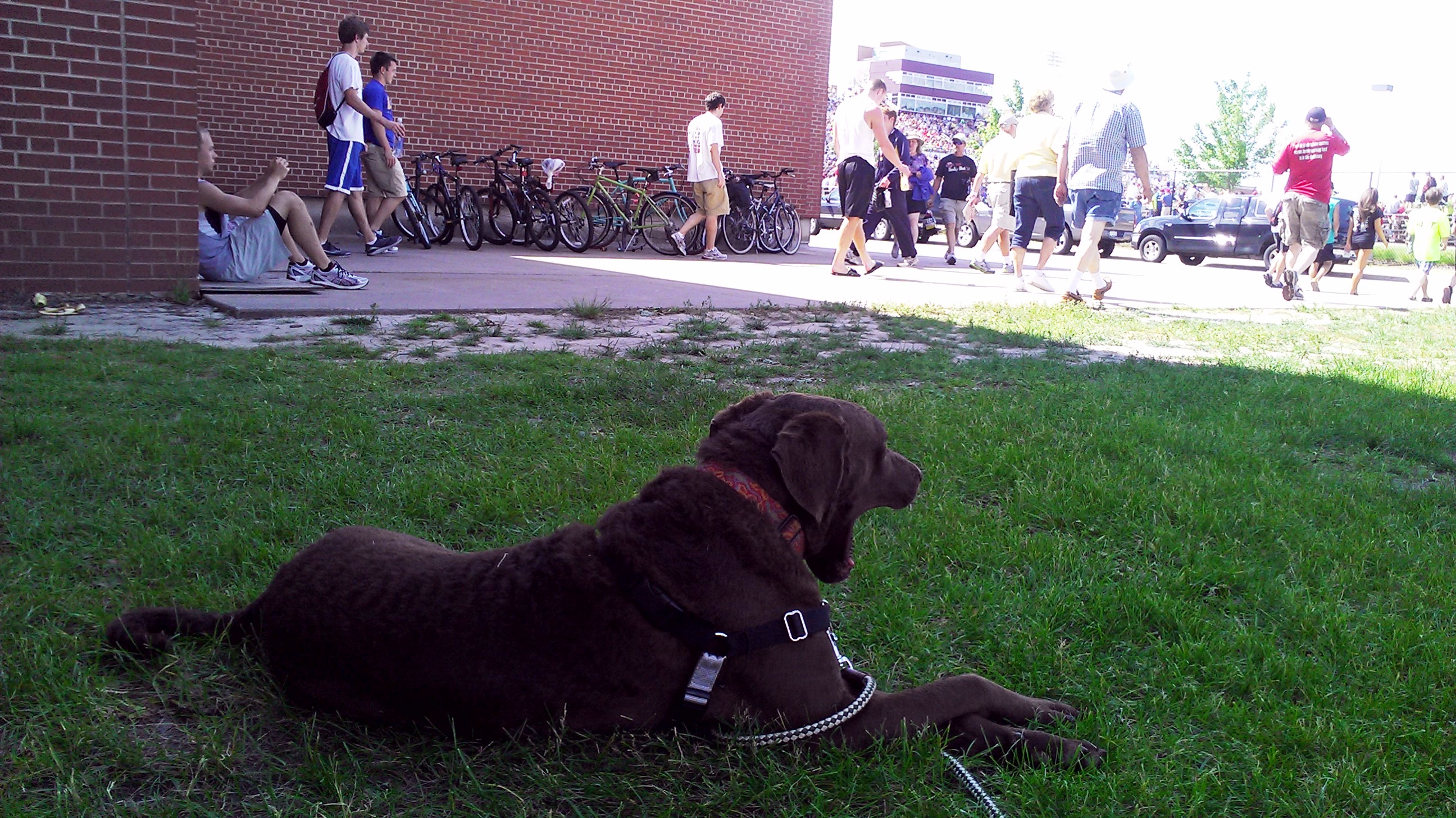Although this is not specifically related to being blind, it is an issue/stage that blind puppies can experience and present its own unique challenges.
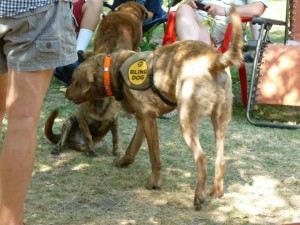
For the last few weeks, Radar has been more barky than usual. We started attending obedience class thinking it would help socialize him. While he barked a little less than last week, he was far from well behaved last week. He seems to have developed a sensitivity to noise and dogs approaching. The trainer and I should walk Radar around the room so he could figure out which dog and person were where and maybe he wouldn’t bark so much. The walk around went well but Radar still barked loudly when he heard an unfamiliar noise. Then when dogs would approach us, he would go nuts barking and pouncing at them.
Based on his age of 11 months and his actions, we decided this must be a second fear period. Second Fear Period is a potentially traumatic stage of development for young dogs, that occurs during adolescence (6-14 months). This is also the point at which a puppy will start testing his/her owner. The puppy might become more aggressive and less obedient. This stage can coincide with sexual maturity, so a male dog might start lifting his leg when urinating and females might experience their first heat period. The puppy could also be shedding its baby coat and replacing it with its adult coat. There is a lot going on and this stage can catch you by surprise. I was not familiar with this second fear period but as I read more about it, I realize this is what Radar is experiencing. (sources: http://www.recycler.com/blog/pets/the-second-fear-stage.php and http://www.positivedogs.com/articles/early_doesnt_mean.html)
So what do we do?
- You might want to back off a little from activities and socialization. Make sure that any exposure is positive and below threshold.
- Make sure he has enough space to be comfortable and not feel threatened.
- Work on counter conditioning and desensitization (for more information http://www.peninsulahumanesociety.org/resource/pdf/dog/DesensitizationCounterconditioning.pdf). There is a lot of information on how to do this. I have watched several videos, read lots of articles and ultimately you have to read, watch and experiment to see what works for your dog.
- I use a Kong stuffed with food and peanut butter, yummy treats and dehydrated sweet potato slices for Radar.
- I also have used counter conditioning and desensitization with Louie and he does really well with lots of yummy, high value treats, distance, some T-Touch and I can calm him by running my index finger from between his eyes to the crown of his head.
- The key is to provide socialization experiences where Radar doesn’t go over threshold, meaning no barking or other reactive behavior until he gets used to it. Sometimes the reaction (i.e. barking and leaping) is due to exposure to too many things all at once.
- I think this is exacerbated when a puppy is blind. If you can expose them to things one at a time, it is better for the dog. They need to learn how to handle new experiences and gain the confidence to handle them in stride. This can only be accomplished if you proceed carefully, observing their reactions and backing off when you see them being timid or fearful.
-
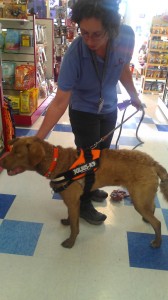
Radar during one of our visits/training sessions at Wags & Whiskers, our local pet store. The staff is very supportive of Radar and willing to help me with his socialization and training. Too much confined space might also overwhelm a blind dog, as they must feel totally surrounded and very confused. Socializing in areas where there are other people and dogs to mix with but not so many that it overwhelms him. Going to a class that allows the blind or fearful dog just sit or stand at the side so everything is happening in front of them and at a distance rather than all around them. This can help keep them under threshold and allow them to adjust to all the noises and smells.
- I have been taking Radar to our local, small pet store during low traffic times. We walk to the store and then practice some of our commands in the store. The staff is great with Radar and very welcoming to us and accomodating Radar’s socialization needs. They give him yummy treats and I am armed with a few toys, sweet potato chews and lots of treats. We situate ourselves in a part of the store and work on some commands. When people come in I give him lots of treats and praise. I do more commands and make sure I am talking and touching him but not coddling him. So far, so good.
I think the key to this is finding the fine line between desensitization/counter conditioning and coddling. I feel the worst thing I can do for Radar is coddle him. He needs to develop as a confident and outgoing blind dog so I try to treat him the same as I would any other 11 month old puppy. I do need to make a few accommodations but not too many. It is a very fine line and I watch his reactions and behaviors to help guide me.
I am not an expert and this is a work-in-progress! Stay tuned and I will keep you posted on how it works.
More interesting information on developmental stages of puppies. http://www.diamondsintheruff.com/developmentalstages.html
